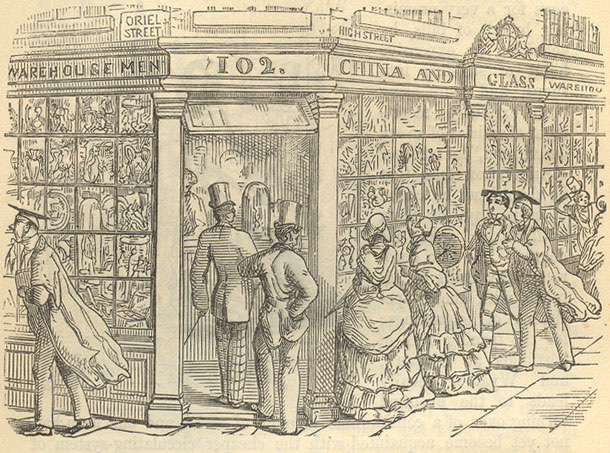2. The Edited Diary
Introduction
Richard James Spiers (1806-1877) trained as a hairdresser and perfumer and joined his father in the family business in High Street expanding it by 1846 to deal in stationery, general fancy goods, desk and dressing cases, cutlery, china, glassware and hardware.
He kept diaries and journals from the age of 15 and after his death his family realised that his life and the times he recorded were of interest so two of his younger sons, Walter Lewis Spiers (1848-1917) and Arthur Hood Spiers (1853-1940) selected the extracts with notes - chiefly by Arthur - who also transcribed it.
Editing
Walter and Arthur took all the diaries that their father had written and picked out highlights, condensing 55 years down to 209 pages. Judging by Spiers' travel journals in his own, small, even hand there must have been thousands of pages to go through and the result consists of 44 pages for his bachelor years, 80 pages for his married life, and 85 for later life.
Family and friendship is a theme that runs through the diary, from the commercial community of Oxford High Street then broadening out to London via his business and antiquarian interests and nationally through his freemasonry connections.

Figure 1 This picture of Spiers' shop at 102/103 High Street was drawn by Cuthbert Bede for his book The Adventures of Mr Verdant Green, published in 1853. With thanks to Stephanie Jenkins (http://www.oxfordhistory.org.uk/high/tour/south/102_103.html)
Another theme is the portrayal of progress from the development of travel from coach to rail, of photography and the medical use of chloroform, to the newly formed national societies and major exhibitions.
There are glimpses of the Oxford Movement through church sermons and the presence of John Henry Newman at St Mary the Virgin, Spiers' parish church, and later at Littlemore, but there is no mention of the debate between Thomas Huxley and Samuel Wilberforce in the University Museum of Natural History on 30 June 1860 despite Spiers being very involved in the British Association for the Advancement of Science Meeting, entertaining many of the speakers. A 'Fight in Section F between Fawcett & Whewell' on the 29 June was all that was recorded of the debates. These speakers are amongst the 340 or so people mentioned in the diary with entries in the Oxford Dictionary of National Biography; his sons Richard Phené Spiers (1838-1916), architect, and Walter Lewis Spiers (1848-1917), museum curator and architect, are also in the dictionary.
The edited diary is short, so more can be found out about Spiers in Jackson's Oxford Journal where there are advertisements for his shops, his speeches at council meetings and court cases. The only hint in the diary of his bankruptcy in 1872 is that he decided to give up the family home at 14 St Giles and take on a smaller house; one with four sitting rooms and seven bed and dressings rooms was subsequently bought in Blackhall Road.

Figure 2 February-June 1854 pages from diary
Editorial note
Arthur marked important events and people by underlining or bracketing in red ink.
He used square brackets to enclose his editorial comments, which here are placed in italic within the brackets to differentiate between the text and his notes. He marked his father's mayoral year with double vertical blue lines. Footnotes are few, being either corrections or missing data supplied from modern sources.
The diary will be uploaded shortly
Oxfordshire Architectural and Historical Society is a registered charity, No 259055.
All Rights Reserved © OAHS 2010-2025
Privacy Policy
Committtee Login